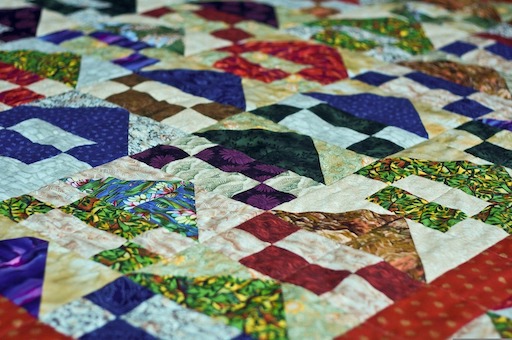4 Immersing ourselves in our inquiry focus
Having developed or reframed your inquiry focus in Activities 5 or 6, we are now going to focus on immersing ourselves in the positive core of our area of inquiry. This phase of appreciative inquiry is about collecting positive, appreciative stories, and therefore is likely to take you some time to complete. You may also come back to this collecting phase in the later stages of the inquiry. As a result of this collecting and collating phase, you will begin to develop an understanding of where the potential for new thinking and generative doing is. We get to this point by finding the practices and strengths that already exist, but have the possibility for developing into different, and improved, ways of practicing.
Activity 7 Creating a tapestry of stories
At this point, you are going to use three questions as starting points for gathering the stories that will generate a multi-faceted perspective on your inquiry focus:
- What is your best experience of ... [your inquiry focus]?
- What do you value most about ... ?
- What are your three wishes for … ?
Spend some time gathering your own and others’ responses to these questions. You might choose to:
- take pictures
- write short stories
- audio record a conversation with someone interesting
- collect objects/examples of work
- explore different metaphors
- search for examples on the internet or social media.
Activity 7 should have built a tapestry of evidence that casts an appreciative gaze over the area of your inquiry, from a range of perspectives. In doing so, you may have already begun to identify comments, images, stories, metaphors of interest. The following two activities will support you in thinking with these stories further to draw out the elements that feel most generative for thinking and doing differently.
Activity 8 Thinking with your inquiry stories
To help you begin to make sense of the stories you have gathered, you’re going to return to some free writing. You might want to refer back to the video in Activity 1 [Tip: hold Ctrl and click a link to open it in a new tab. (Hide tip)] to remind you of the ‘rules’ of free writing. As with previous activities, you may complete this individually or collectively, building time to collaborate on what is emerging from the process as a group.
- Set a timer for five minutes and write without stopping about the stories you gathered for Activity 7. You might want to use the prompt questions in Activity 7 as a starting point or you might want to write completely freely to see what emerges – either is fine!
- Look back through your free writing. Each time you notice something – a word, a phrase, a sentence – that strikes you as interesting or significant, highlight it. Now write each of these words, phrases or sentences onto a separate sticky note and lay these out in front of you.
- Look back through the ‘stories’ that you collected as part of Activity 5. Do these trigger any further reactions and thoughts? Capture these words and phrases on sticky notes too.
For the next activity, you’re going to do something that Simons (2009) terms ‘dancing with the data’ (p. 140). Simons advocates the use of creative art forms in the inquiry process, and this includes more tactile ways of working with data. One of these is to physically move data around, ‘positioning and repositioning them until they make a certain sense’ (p. 140). This way we bring different ideas, characters, small elements of our stories into contact with each other, creating opportunities to see or feel something different.
Activity 9 Dancing with your data to identify potential
Working with your sticky notes, move them around and join them together to uncover patterns and connections between them. Are there core themes or clusters of themes that begin to emerge? Experiment with different ways of organising them until you arrive at an arrangement that best captures these.
Step back from your arrangement.
- Where are the most generative possibilities in your data?
- Where are the surprising elements?
- What feels new, exciting or intriguing to you at this stage?
- What particularly captures your attention?
Write these in a notebook or journal – these now becomes the generative ‘springboards’, which you will use to drive forward your inquiry. You will return to them in the next session.

